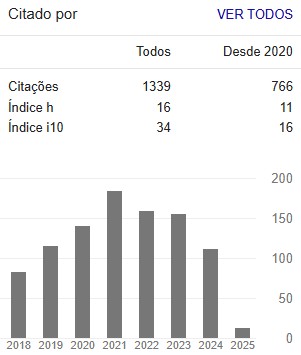Nutritional evaluation in active and institutionalized elderly subjects using bioimpedance
Abstract
The aim of this study was to compare the nutritional assessment using bioimpedance in active and institutionalized elderly over 60 years. We evaluated individuals from a long-term institution and physically active individuals from a city in the interior of São Paulo. Descriptive and statistical analysis were performed. Unpaired Student's t-test was applied considering 5% significance using GraphPad Prism software. The active group had a higher prevalence of women (73.40%), high calf circumference levels (37.21 ± 3.16) and fat percentage (37.47 ± 4.91). Most elderly in both groups (53.30%) were classified as normal weight by the Body Mass Index (BMI). The active group was not at risk of developing sarcopenia, so the practice of regular exercise generates numerous benefits for the senile population, such as improved quality of life, health promotion and assistance in preventing pathologies.
Downloads
Downloads
Published
Issue
Section
License
Os artigos submetidos à revista Colloquium Vitae estão licenciados conforme CC BY-NC-ND. Para mais informações sobre essa forma de Licenciamento, consulte: http://creativecommons.org/licenses/by-nc-nd/4.0/.
A disponibilização é gratuita na Internet, para que os usuários possam ler, fazer download, copiar, distribuir, imprimir, pesquisar ou referenciar o texto integral dos documentos, processá-los para indexação, utilizá-los como dados de entrada de programas para softwares, ou usá-los para qualquer outro propósito legal, sem barreira financeira, legal ou técnica.

